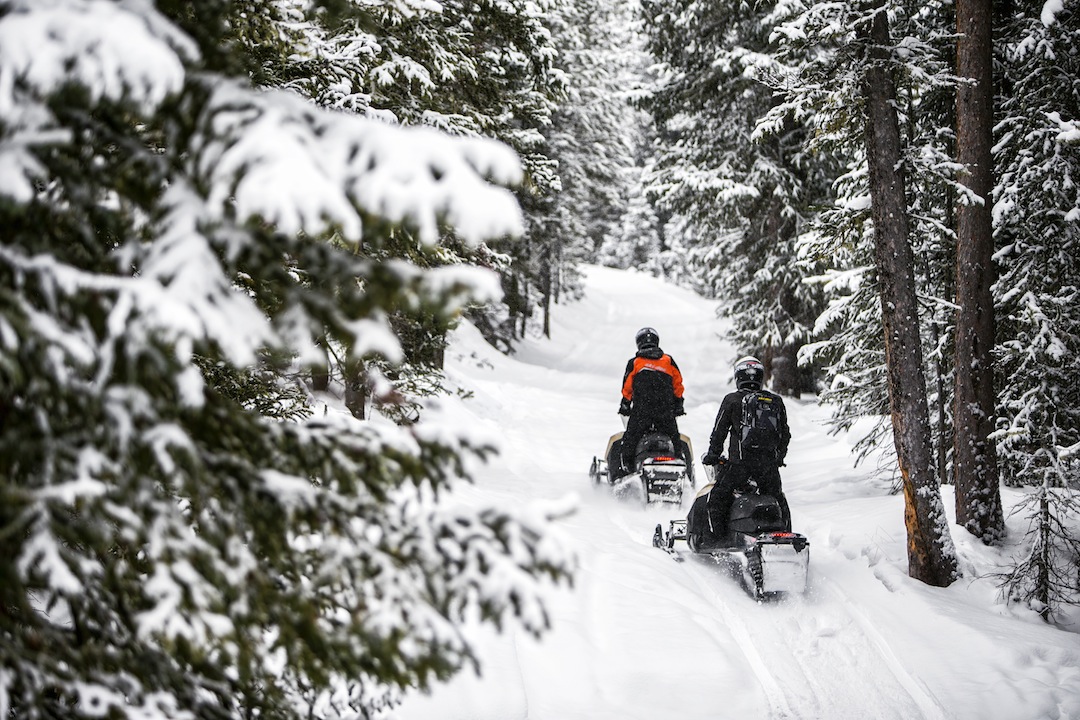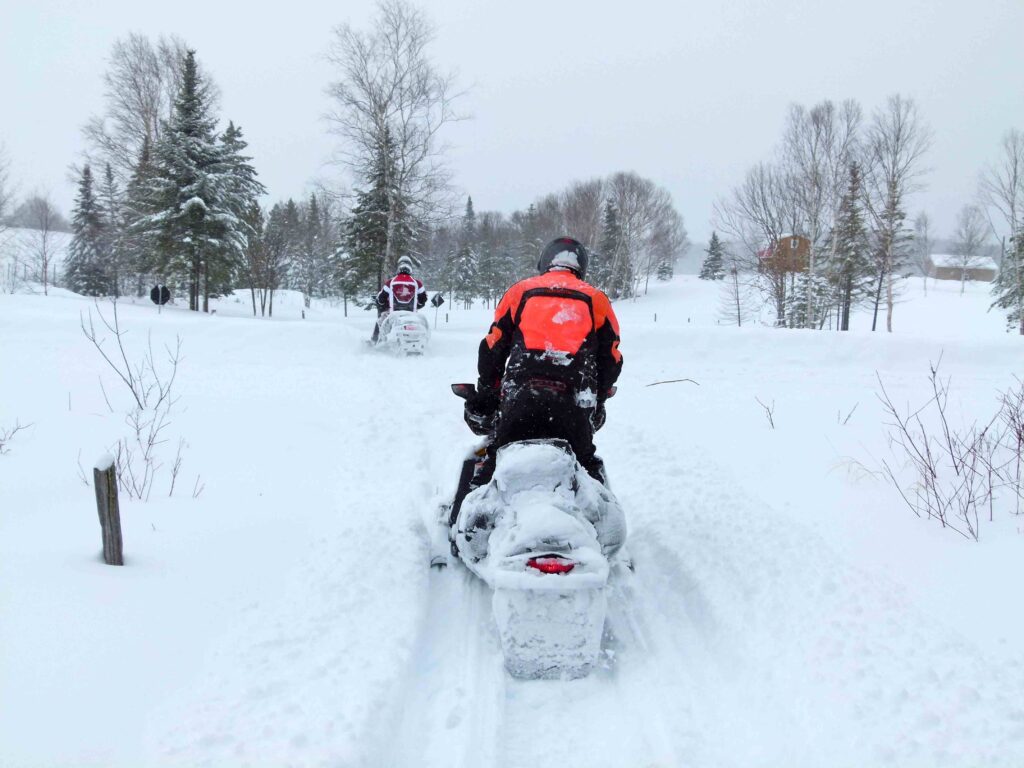How To Stay On Snowmobile Trails in Bad Weather…
Related: Pathfinding in Heavy Snow
How are you at snowmobile pathfinding on your snowmobile tour or snowmobile vacation? While there can be no doubt that trail riding has increased the popularity of snowmobiling, one potential downside is that it lulls us into a false sense of security in the wilderness.
Yes, all snowmobile trails lead somewhere eventually, but you could still be miles away from anywhere or even headed the wrong direction. What if a snowstorm obliterates your groomed path, or key directional signs go missing? Could you find your way in unfamiliar terrain?
Good instincts, a strong sense of direction, and the ability to recognize and correctly interpret numerous clues can pull you through. While I don’t recommend snowmobiling when Mother Nature acts up, here are a few practical tips that can help. Also learn about pathfinding in heavy snow.
Stay on Snowmobile Trails – Practical Tips
Before departing, inform someone at your arrival destination of your schedule and proposed route so that if problems arise, help will arrive sooner than later. Before setting out, talk to locals. Study trail, highway, and if you have them, topographical maps, to familiarize your companions with the general direction, route, and such landmarks as towns, rivers, lakes and intersections. Everyone should carry a compass, the same maps and extra gas.
Stay on Snowmobile Trails – Take Your Time
Slow down the pace of the ride. Take your time and consult with your riding companions frequently during the day to ensure that every rider knows specifically what you’re looking for at each stage along the route. Remember, multiple eyes are better than only the leader’s. When in doubt, stop at every intersection to re-orient yourself using maps, available signs and shared common sense. This way, you keep your group together, and have a better sense of where you may have gone astray if you have to backtrack.
Stay on Snowmobile Trails – Any Sign Will Help
In the absence of official snowmobile trail markers, watch for any kind of sign. Even logging signs, advertisements, or that old marker for Joe’s hunt camp, may provide valuable clues. In the absence of any signs on your side of the trail, look back over your shoulder frequently to spot any that may be facing the opposite direction. Often, you can judge where you should be going by discovering where oncoming traffic has come from. As a general rule, if you’re sure about the trail you are on, don’t turn off it without a definite indication or a very good reason.
Stay on Snowmobile Trails – Feeling the Trail
At unmarked intersections, stop before your sleds destroy any evidence, and explore ahead on foot like a tracker snooping for clues. Sometimes, you just have to drive by feel. A previously groomed or well-used trail should be hard-packed underneath fresh snow, and often if you ride slowly, you will feel the difference through your track, skis or handlebars if your sled slips off the hard pack.
Be sensitive to any changes in trail characteristics that may help guide your way, such as width, feel, elevation or direction. Watch for visible indications of a groomed trail like the defined edge left by a drag, a smoother surface than surrounding terrain, bordering trees and branches pruned back by trail clearing, or ripply shadows or ridges caused by an underlying mogul pattern or track marks hidden under the snow.
When you emerge into an open area such as a lake, filed or clearing, search the perimeter for breaks in the bush or tree-line that may indicate where the trail goes. When in doubt, pick the direction that makes the most sense and monitor it frequently.
Finally, don’t be afraid to ask for help or admit you’re wrong. The alternative could be a long cold night in the bush. Or you could just use a GPS unit!
The tips and advice in this blog are the opinions of the author, may not work in every situation and are intended only for the convenience and interest of the reader, who has the personal responsibility to confirm the validity, accuracy and relevancy of this information prior to putting it to their own use.


